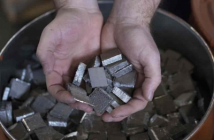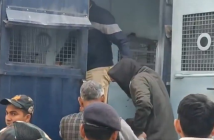Kolkata: Those 72 hrs were a make-or-break for India’s indigenous aircraft carrier INS Vikrant. The nation cheered as Indias first Indigenous Aircraft Carrier (IAC) INS Vikrant was formally commissioned into the Indian Navy by Prime Minister Narendra Modi. Save for a few, none were aware of the 72 nail-biting hours that were a make or break for the project during its initial days. The decision to build the carrier would have had to be scrapped altogether had engineers and metallurgists not sorted out an issue concerning steel for the flight deck.
Indigenisation, that too to an extent of nearly 76 per cent wasn’t the prime focus when designers began work on the 45,000-tonne behemoth around 2002.
It was estimated that nearly 27,000 tonnes of high-grade steel (of three different kinds) would be required for the project. Indian shipyards did build warships at that time but the steel was imported.
“When India went in search of steel for the IAC, there were no sellers. There could be several reasons for this. One of these could be that nobody could supply that huge quantity. It could also be that nobody wanted to sell steel to India for an aircraft carrier as foreign powers wanted us to keep up importing such specialised vessels. Our first two aircraft carriers were second hand ones after all. On realising that the steel could not be imported, Defence Metallurgical Research Laboratory (DMRL) came up with specifications. Heavy Engineering Corporation (HEC) Ltd, Ranchi, succeeded in manufacturing some ingots but mass production was required. Steel Authority of India Ltd (SAIL) took up this challenge,” a source revealed.
Three types of steel were required for the aircraft carrier. DMR 249 Grade-A was required for the hull and superstructure of the aircraft carrier. The Bhilai and Bokaro Steel Plants started to produce this.
The second variety, DMR 249 Grade-B, was more special. This steel would be used for the flight deck and needed to be extremely strong (to withstand the pressure as aircraft took off) but flexible (to spring back to its original position after every take off). This steel was produced at Alloy Steel Plant (ASP) in Durgapur, West Bengal.
The third type required in small quantities was the Z-25. This was to be used for the flooring of the machine rooms to withstand 25 per cent compression due to the pressure.
The steel plates made at ASP didn’t travel straight to Kochi though. They were first taken to the Rourkela Steel Plant (RSP) for special treatment to make them both hard and tough. At RSP, the plates first went through ‘water quenching’ to make them hard. A round of �tempering’ followed to make them tough. Finally, there was another round of ‘water quenching’ before the DMR 249 Grade-B plates achieved their unique qualities.
“Everything seemed to be going well till a batch of DMR 249 Grade-B plates developed internal stress six months after delivery. We had barely three days (72 hours) to come up with a solution. DMRL had nothing on this subject. There could be no aircraft carrier without a flight deck after all.
“In those three days, our engineers and metallurgists came up with two processes to prevent internal stress. We adopted one of these and supply resumed,” the source added.





